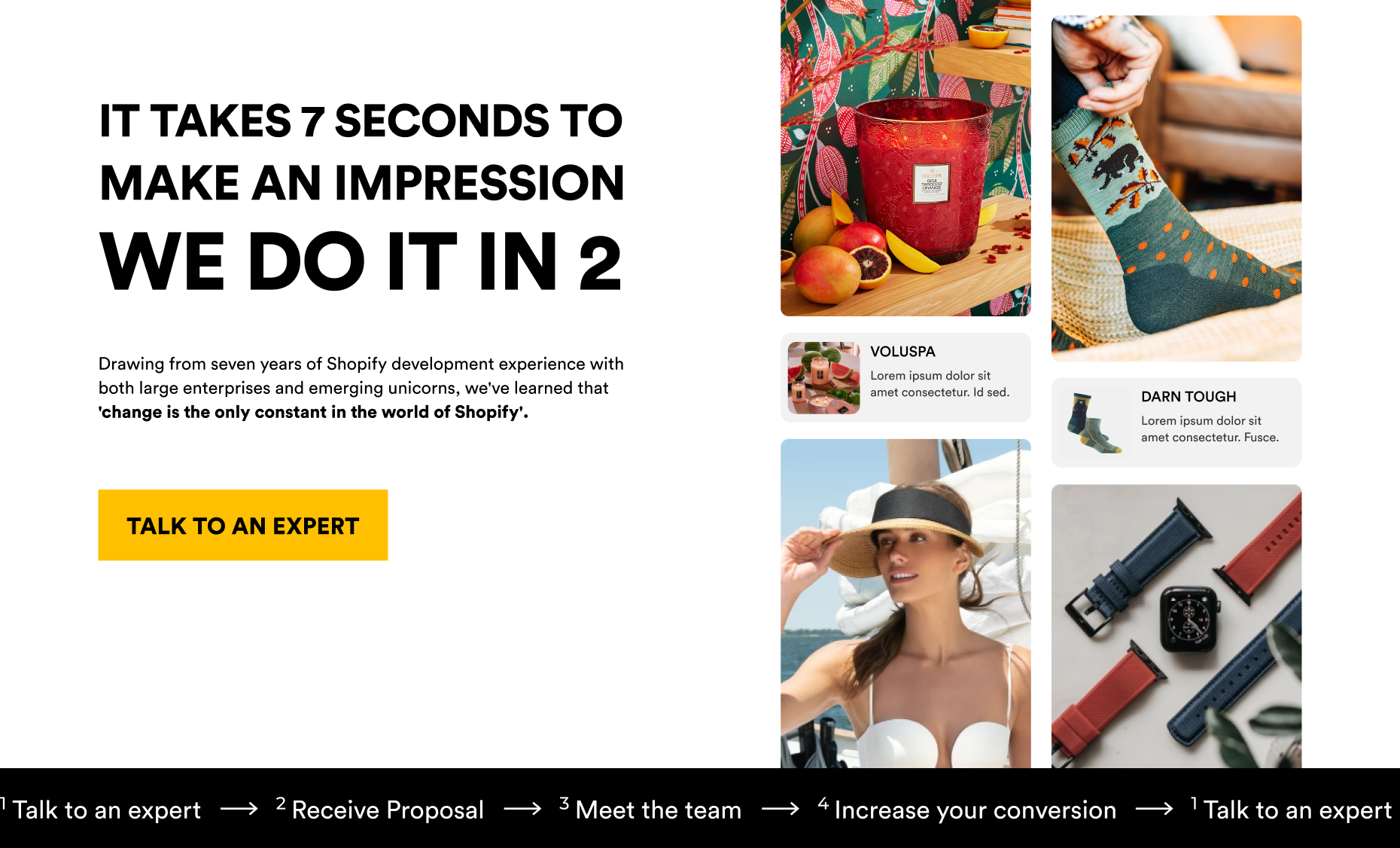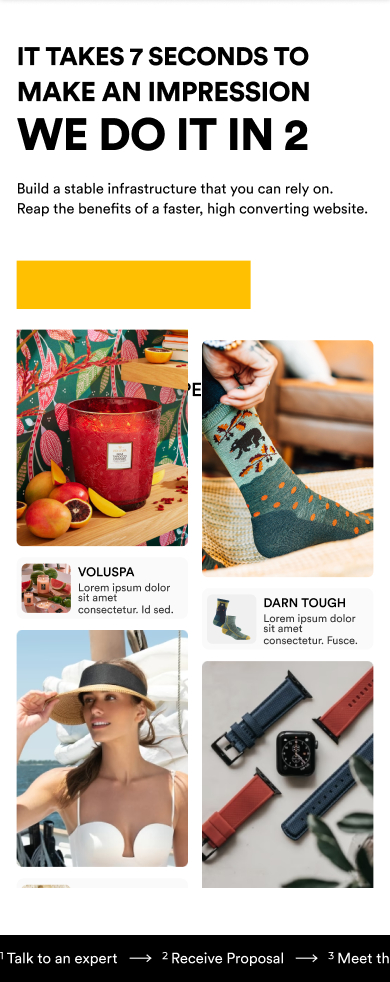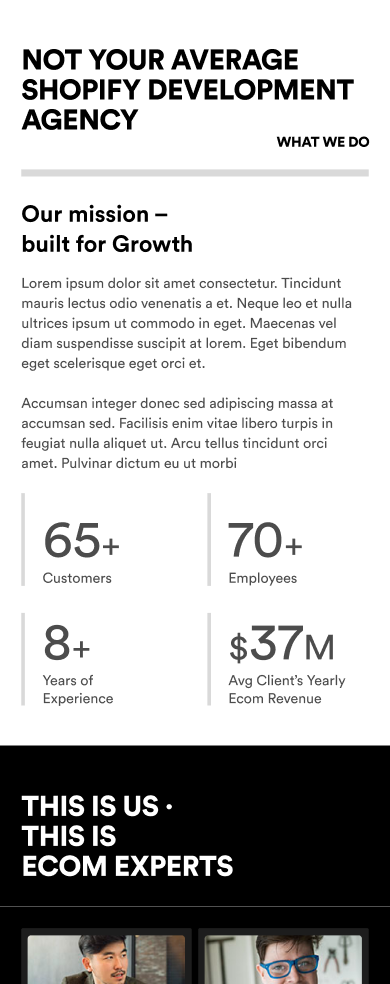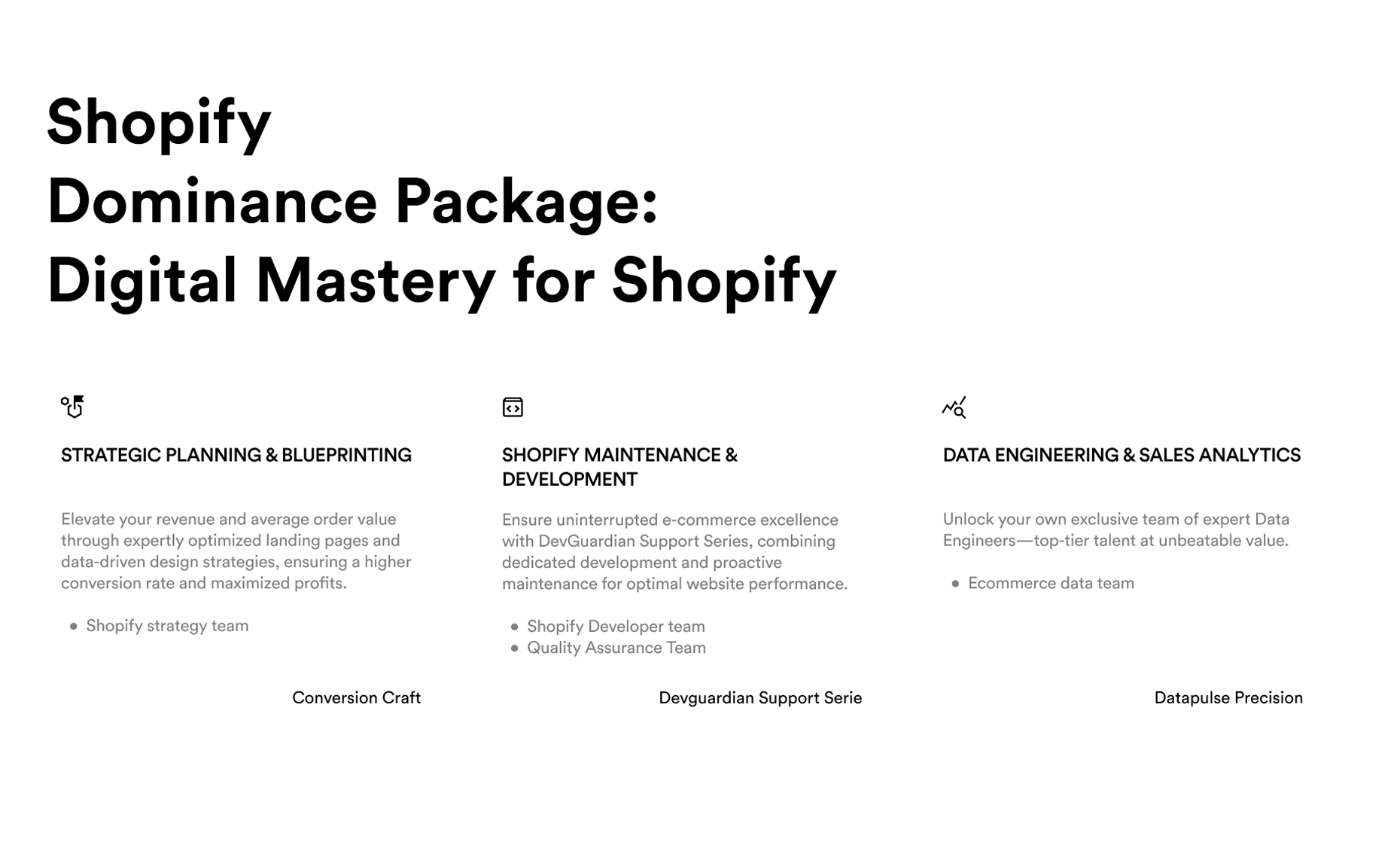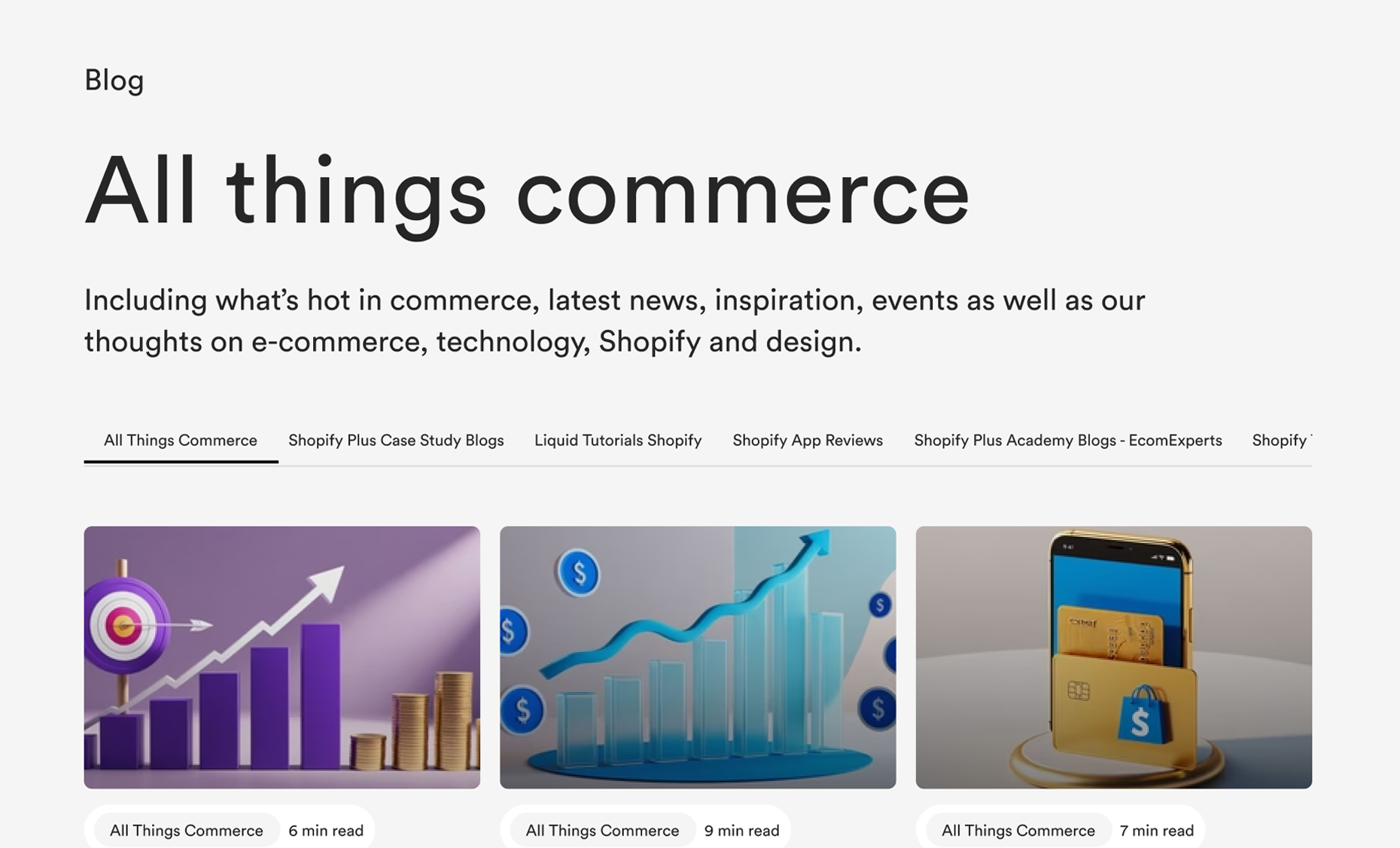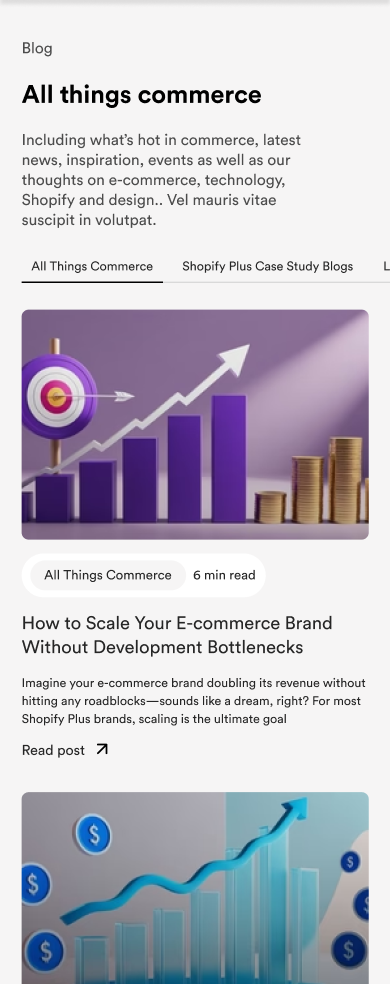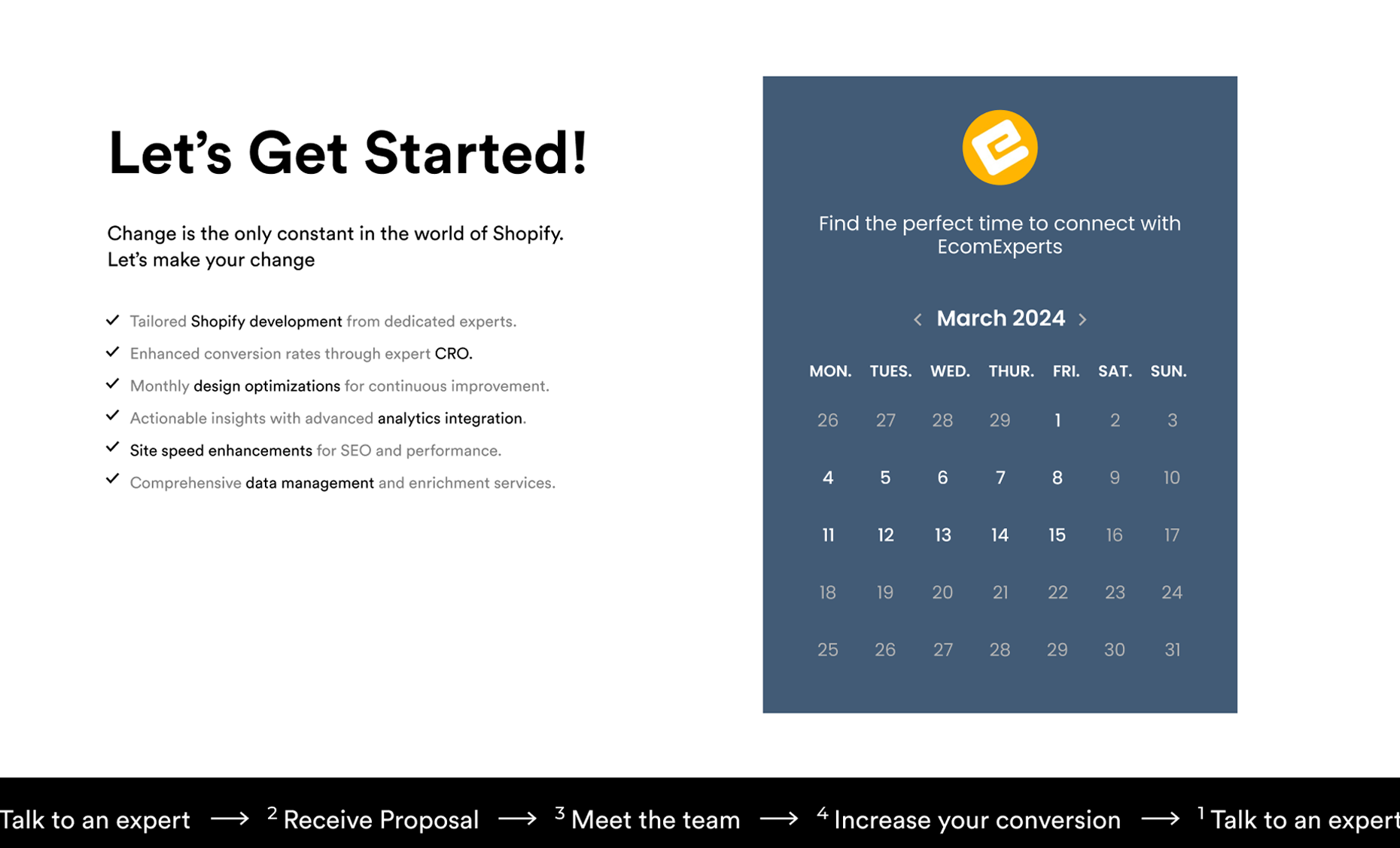Introduction
In e-commerce, your website design isn’t just about looking pretty—it’s about driving results. We’re talking sales, conversions, customer loyalty—the whole nine yards. If your e-commerce website isn’t designed to deliver a seamless, engaging experience, you’re leaving money on the table. Period.

Why E-commerce Website Design is Everything
In 2024, e-commerce is more competitive than ever. With millions of stores vying for attention, what sets you apart? It’s not just your product or pricing—though those matter too—but it’s the experience you offer.
Your website is your digital storefront, and just like in the real world, first impressions count. If your site doesn’t captivate and convert in seconds, potential customers are bouncing faster than you can say “abandoned cart.”
What’s in This Blog
We’re about to break down everything you need to know about e-commerce website design—from why it matters, to the must-have elements, to the latest trends shaping the industry. And yeah, we’ll throw in some real-world examples and actionable tips to keep you ahead of the game.
Plus, we’ll naturally weave in how a Shopify Plus agency like Ecom Experts can help you nail every aspect of your design strategy, without feeling like a hard sell. Ready? Let’s go.
The Importance of E-commerce Website Design

If you're not taking your e-commerce website design seriously in 2024, you're playing yourself. We’re in an era where your website isn’t just a digital storefront; it’s the face of your brand. It’s the handshake, the first impression, the moment of truth. Your e-commerce site is where potential customers decide in mere seconds whether they trust you enough to spend their hard-earned cash.
User Experience (UX)
First off, let’s talk about user experience (UX). It’s not just a buzzword; it’s your golden ticket to success. Great UX is all about making your website intuitive and easy to navigate.
Your customers should feel like they’re gliding through your site, finding what they need without even thinking about it. If they hit a snag—a confusing menu, a broken link, or a page that takes forever to load—they’re out. And trust me, they won’t be coming back.
In fact, research shows that 88% of online consumers are less likely to return to a site after a bad experience. That’s why a clean, user-friendly design isn’t just nice to have—it’s essential. It’s the difference between a one-time visitor and a loyal customer.
First Impressions
Next up, let’s talk first impressions. Your website has about 50 milliseconds (yep, milliseconds!) to make a lasting impact. That’s all the time a user needs to form an opinion about your site—and your brand. If your site looks outdated, cluttered, or unprofessional, they’ll bounce faster than you can say “conversion rate.”
A well-designed e-commerce site tells your customers that you’re legit, that you care about their experience, and that they’re in the right place. It’s like walking into a well-organized, beautifully lit store versus a messy, chaotic one. Which one would you rather shop in?
SEO Impact
Now, let’s not forget the elephant in the room—search engine optimization (SEO). Your site’s design doesn’t just affect how users interact with it; it also impacts how search engines rank it. Google’s algorithms are smart—they know the difference between a well-designed site and one that’s just been slapped together.
Things like page load speed, mobile responsiveness, and even your site’s structure all play a role in how Google ranks you. If your site is slow, clunky, or not optimized for mobile, Google’s not going to be your friend. And if Google’s not your friend, good luck getting those organic clicks.
To put it simply: A well-designed e-commerce site is your ticket to higher rankings and more traffic.
It’s not just about looking good; it’s about being functional, fast, and easy to use. And in 2024, that’s what’s separating the winners from the losers in the e-commerce game.
So, if you’re serious about growing your online store, you need to get serious about your website design. It’s not just about aesthetics—it’s about creating a seamless experience for your customers and making sure Google loves you for it. And trust me, when you nail this, you’ll see the results in your traffic, your conversions, and your bottom line.
Key Elements of Successful E-commerce Website Design

Alright, now that we’ve nailed down why e-commerce website design is so crucial, let’s get into the nitty-gritty. It’s time to break down the key elements that can take your online store from “meh” to “must-visit.”
Whether you’re just starting out or looking to revamp your site, these are the design essentials you can’t afford to ignore.
Navigation
Let’s kick things off with navigation. Imagine walking into a physical store and not knowing where anything is—frustrating, right? The same goes for your online store.
Your customers need to find what they’re looking for without getting lost in a maze of pages. Clear, intuitive navigation is like the map that guides your customers through your site, making it easy for them to find products, explore categories, and ultimately hit that “Buy Now” button.
But here’s the deal—navigation isn’t just about throwing up a menu bar and calling it a day. It’s about strategically placing elements where they make sense, reducing the number of clicks it takes to get from point A to point B, and ensuring that the journey is as smooth as possible. A well-structured navigation system can reduce bounce rates and keep visitors engaged longer, which is a big win for your SEO efforts.
Mobile Responsiveness
In 2024, if your e-commerce site isn’t mobile-friendly, you’re practically leaving money on the table. We’re living in the thumb generation—people are shopping on their phones while waiting in line, during lunch breaks, even in bed. So, if your site doesn’t look and perform flawlessly on a smartphone, you’re missing out on a massive chunk of your audience.
Mobile responsiveness isn’t just a nice-to-have; it’s a must-have. Google’s algorithms are all about mobile-first indexing now, meaning your site’s mobile version is what Google primarily uses to determine your rankings.
So, it’s not just about pleasing your customers—it’s about pleasing the search engines too. And when you nail mobile design, you’re setting your store up for better visibility, higher traffic, and more conversions.
Visual Hierarchy
Next up, let’s talk about visual hierarchy—the unsung hero of e-commerce design. Think of visual hierarchy as the roadmap that tells your customers what to look at first, what’s important, and what actions they should take. It’s about using design elements like color, contrast, size, and spacing to guide the eye where you want it to go.
Your goal here is to make it crystal clear what’s most important on any given page. Is it a product image? A call-to-action button? A special offer? Whatever it is, it should stand out and grab attention immediately. When done right, visual hierarchy doesn’t just make your site look good; it makes it more effective at driving conversions.
Page Load Speed
Let’s get one thing straight—page load speed is a deal-breaker. We live in a world of instant gratification, and if your site takes more than a few seconds to load, you’re going to lose potential customers faster than you can say “conversion rate.”
Google’s ranking algorithms are heavily influenced by load speed, especially on mobile devices. The faster your site loads, the better your chances of ranking higher in search results. But it’s not just about rankings—speed directly impacts your bottom line. A one-second delay in page load time can reduce conversions by up to 7%. That’s right, a single second could cost you a significant chunk of sales.
So, optimize those images, minify your code, and consider using a Content Delivery Network (CDN) to boost load times. Your customers—and your SEO—will thank you for it.
Each of these elements—navigation, mobile responsiveness, visual hierarchy, and page load speed—plays a critical role in creating a seamless, engaging shopping experience that keeps customers coming back for more. Nail these, and you’re not just designing a website; you’re building a powerhouse e-commerce platform that drives traffic, boosts conversions, and positions your brand as a leader in the market.
Trends in E-commerce Website Design

Alright, let's dive into what’s hot in the world of e-commerce website design as of August 2024. If you’re in the game of selling online, you need to stay ahead of the curve. The trends we’re about to discuss aren’t just about looking good—they’re about creating an experience that your customers won’t forget. Let’s break it down.
Minimalist Design
Minimalism in e-commerce design is here to stay, and for good reason. In a world where consumers are bombarded with information and choices, a clean, uncluttered website can be a breath of fresh air. It’s about stripping away the unnecessary and focusing on what really matters—your products and your brand story.
Why It Works:
- Focus on Products: With less clutter, your products become the star of the show. Think about it—no distractions, just pure focus on what you’re selling. That’s what minimalist design does.
- Faster Load Times: Minimalist sites are usually lighter, which means they load faster. And we all know that faster load times lead to better user experiences and higher conversion rates.
- SEO Benefits: Google loves fast, clean websites. A minimalist design can help improve your site’s load speed, which is a key ranking factor.
Personalization
We’re living in the era of personalization, where customers expect tailored experiences. Gone are the days of one-size-fits-all. If you’re not personalizing, you’re missing out on a huge opportunity to connect with your audience on a deeper level.
How to Implement Personalization:
- Dynamic Content: Show different content to different users based on their behavior, preferences, or location. For instance, recommend products based on past purchases or browsing history.
- Personalized Offers: Use data to create special offers or discounts for returning customers. It’s not just about making a sale; it’s about making your customers feel valued.
- Interactive Elements: Consider integrating chatbots or quizzes that guide users to the products they’re most interested in. The more interactive and personalized the experience, the more likely you are to convert.
Interactive Features
In 2024, it’s not enough to just have a static website. You need to engage your visitors, make them stay longer, and guide them toward making a purchase. That’s where interactive features come in.
What’s Trending:
- Quizzes and Product Finders: These tools help customers find exactly what they’re looking for, and they’re fun to use. Imagine a skincare brand that offers a quiz to find the perfect routine based on skin type and concerns.
- Chatbots: AI-powered chatbots can answer questions, guide users through the buying process, and even handle post-purchase inquiries. They’re available 24/7, offering immediate assistance and enhancing the overall user experience.
- Virtual Try-Ons: Especially relevant for fashion and beauty brands, virtual try-ons allow customers to see how a product will look on them before making a purchase. It’s all about reducing the friction in the buying process.
Sustainable Design
Sustainability isn’t just a buzzword anymore—it’s a movement. More consumers are making purchasing decisions based on a brand’s environmental impact. If your website can reflect your commitment to sustainability, you’re more likely to attract and retain these conscious consumers.
How to Incorporate Sustainable Design:
- Eco-Friendly Hosting: Choose a hosting provider that uses renewable energy. It’s a small change that can have a big impact.
- Sustainable Materials in Design: If you’re selling physical products, highlight how they’re made using sustainable materials. Your website design should also reflect this ethos—think earthy tones, recycled paper textures, etc.
- Transparency and Storytelling: Use your website to tell the story of your sustainability journey. Consumers appreciate transparency, and if you’re doing good for the planet, don’t be shy about sharing it.
Voice Commerce
Voice commerce is gaining momentum as more consumers use voice assistants like Alexa, Siri, and Google Assistant to shop online. Optimizing your e-commerce site for voice search can give you a competitive edge in this emerging trend.
What to Focus On:
- Voice Search Optimization: Ensure your content is optimized for voice search. This means focusing on natural language, long-tail keywords, and question-based queries.
- Voice-Activated Shopping: Consider how your products can be purchased via voice commands. This could involve integrating with platforms like Amazon Alexa or Google Assistant.
Each of these trends in e-commerce website design isn’t just about following what’s popular—they’re about staying relevant and ahead of the curve. As we move further into 2024, these trends will continue to shape how consumers interact with online stores. By embracing them, you’re not just enhancing your site’s aesthetics; you’re creating an experience that resonates with your audience and keeps them coming back for more.
Up next, we'll dive into how you can choose the right design elements for your e-commerce store to ensure you’re not just keeping up but leading the pack.
How to Choose the Right Design Elements for Your E-commerce Store

Alright, let’s get real. Designing your e-commerce store isn’t just about making it look pretty—it’s about crafting an experience that converts visitors into loyal customers. And guess what? The design choices you make today can make or break your online business tomorrow. So, how do you nail it? Let’s break it down.
Know Your Audience
First things first, you need to know who you’re designing for. Your audience isn’t just a group of faceless consumers—they’re real people with specific needs, desires, and pain points. The design of your e-commerce site should speak directly to them.
For instance, if your target market is Gen Z, you better believe they want a mobile-first experience that’s sleek, fast, and easy to navigate. On the other hand, if you’re targeting an older demographic, your design might need to be more straightforward, with larger fonts and simpler navigation.
Actionable Tip: Use tools like Google Analytics to dig deep into your audience's behavior. Are they primarily visiting from mobile devices? What pages do they spend the most time on? Tailor your design choices based on these insights.
Brand Consistency
Your brand isn’t just your logo or your color scheme—it’s the entire vibe of your business. And that vibe needs to be consistent across your entire e-commerce website. From the fonts you choose to the imagery you use, everything should scream your brand’s identity.
Here’s the deal: Consistency builds trust. When customers see the same look and feel across your site, they know they’re in the right place. It’s like walking into an Apple store—everything from the minimalist design to the product displays reinforces the brand.
Actionable Tip: Create a brand style guide if you haven’t already. This should include your brand’s color palette, typography, imagery style, and tone of voice. Every design element on your site should align with this guide.
Testing and Iteration
Design isn’t a one-and-done deal. The best e-commerce stores are constantly testing and tweaking their designs to improve user experience and conversion rates. This is where A/B testing comes in.
Let’s say you’re not sure whether a red “Buy Now” button or a green one will convert better. With A/B testing, you don’t have to guess. You can run both versions and see which one performs better. Over time, these small tweaks can lead to massive improvements in your conversion rates.
Actionable Tip: Use tools like Google Optimize or Optimizely to run A/B tests on your e-commerce site. Test different elements like call-to-action buttons, product page layouts, and even the wording in your headlines. The data will tell you what works best.
Tools and Resources
Now, I know you’re busy running your business, and the last thing you want is to spend hours tinkering with design elements. That’s where tools and resources come in. There are countless apps and platforms out there designed to make your life easier—and your website better.
Whether it’s using Shopify’s vast array of apps to streamline your design process or tapping into tools like Canva for quick graphic design, the right resources can take your e-commerce website from good to great without the headache.
And hey, if you’re looking to take things to the next level, that’s where Ecom Experts comes in. With our expertise as a Shopify Plus Agency, we’ve got the know-how to integrate the best tools and design strategies into your store. But remember, don’t just add tools for the sake of it—each one should serve a clear purpose in enhancing your design and boosting your bottom line.
Actionable Tip: Regularly review the apps and tools you’re using. Are they still serving your business goals? If not, it might be time to streamline and focus on what’s really driving results.
Case Studies
Alright, let's dive into the real-world magic that happens when you nail e-commerce website design. It's one thing to talk theory, but when you see the results in action, that’s when the lightbulb really goes off.
Gymshark – Flexing the Power of Minimalist Design
The Challenge:
Gymshark started as a small brand in the UK but quickly realized they needed to scale their online presence globally. They were facing the typical e-commerce challenges—slow load times, a clunky mobile experience, and a website that didn’t quite match their brand’s energetic vibe.
The Solution:
They adopted a minimalist design approach, focusing on clean lines, high-quality images, and intuitive navigation. But the real kicker? They implemented headless commerce, decoupling their front-end and back-end systems to make their site lightning-fast.
This move didn’t just improve the user experience; it also gave them the flexibility to push out updates and new features without disrupting the customer journey.
The Result:
Gymshark saw a 30% increase in mobile conversions within three months of the redesign. Their bounce rate dropped significantly, and the average session duration skyrocketed. The new design didn’t just look good—it performed even better.
Key Takeaway:
Sometimes, less is more. By focusing on speed and simplicity, Gymshark turned their e-commerce website into a conversion powerhouse.
Warby Parker – Nailing Visual Hierarchy and User Experience
The Challenge:
Warby Parker needed a way to stand out in the crowded eyewear market. Their old website wasn’t cutting it—the navigation was confusing, the visuals were cluttered, and customers were dropping off before even making it to checkout.
The Solution:
Warby Parker revamped their website with a strong focus on visual hierarchy. They prioritized the customer journey by making sure that the most critical information and CTAs (Call to Actions) were front and center. They also integrated an interactive feature— a virtual try-on tool that used augmented reality to let customers see how glasses would look on their faces.
The Result:
Post-redesign, Warby Parker experienced a 50% increase in conversion rates. The virtual try-on tool became a massive hit, driving engagement and helping customers make faster purchase decisions. And let’s not forget the SEO bump—they started ranking higher for key search terms like “buy glasses online,” which further boosted traffic.
Key Takeaway:
When you align your design with the customer’s journey and make the experience as intuitive as possible, you’re not just improving aesthetics—you’re directly impacting the bottom line.
Allbirds – Combining Sustainability with Mobile Optimization
The Challenge:
Allbirds, the eco-friendly footwear brand, was rapidly growing, but their website wasn’t reflecting their core values. They needed a site that was not only mobile-friendly but also conveyed their commitment to sustainability.
The Solution:
Allbirds redesigned their site to be fully mobile-optimized, with a focus on sustainable design practices. They used eco-friendly web hosting, reduced data usage to lower their carbon footprint, and incorporated sustainable messaging throughout the site. The design was simple yet powerful, echoing their brand’s values.
The Result:
Allbirds saw a 40% increase in mobile traffic and a 25% reduction in cart abandonment rates. The new design resonated with their eco-conscious audience, leading to higher engagement and brand loyalty. Plus, the improved mobile experience led to more repeat customers—a win-win for both the planet and the business.
Key Takeaway:
Aligning your website design with your brand’s values isn’t just good for the environment—it’s good for business. And in a mobile-first world, optimizing for mobile isn’t optional; it’s essential.
By highlighting these case studies, it’s clear that when you get e-commerce website design right, the results speak for themselves. It’s not just about looking good—it’s about driving traffic, boosting conversions, and creating a seamless experience that keeps customers coming back for more. And when you partner with the right team—like the experts at Ecom Experts—you’re setting your Shopify store up for long-term success.
Conclusion
If you’re serious about dominating the e-commerce game in 2024, your website design isn’t just a side project—it’s your frontline warrior. We've covered the key points from nailing user experience to leveraging the latest trends, but let’s wrap this up with a punch of real talk.
Your e-commerce website design isn’t just about catching the eye; it’s about keeping it and driving action. From seamless navigation to mobile responsiveness, every element needs to be meticulously crafted to turn visitors into loyal customers. And let’s not forget SEO—because if Google isn’t showing you love, you’re missing out on organic traffic that could be in your pocket.
So, what’s next? Reflect on the blog summary, and start evaluating your design. Are you optimizing for speed? Does your site speak directly to your audience? Are you harnessing the power of personalization and interactivity? It’s time to take action.
If you’re feeling overwhelmed or want to ensure every aspect of your design is on point, that’s where Ecom Experts—your go-to Shopify Plus Agency—comes into play. We’ve got the expertise to turn your design dreams into a conversion machine. Remember, the right design isn’t just about looking good; it’s about performing better. Let’s get your e-commerce site to the top of its game. Ready to lead, not follow? The future of your online store starts now.
FAQs
1. What are the key elements of effective e-commerce website design in 2024?
Listen up—if you want your e-commerce website to thrive this year, focus on four key elements: intuitive navigation, mobile responsiveness, visual hierarchy, and blazing-fast page load speed. These aren’t just buzzwords; they’re the pillars of a design that converts. A seamless experience across devices, a clear path to purchase, and rapid load times are crucial for keeping customers engaged and boosting your SEO rankings.
2. How does mobile responsiveness impact e-commerce website performance?
Here’s the lowdown: in 2024, mobile responsiveness is non-negotiable. Your site needs to look and work flawlessly on smartphones because your audience is shopping on the go. Google’s algorithms prioritize mobile-first indexing, so if your site isn’t optimized for mobile, you’re not just missing out on customers—you’re sinking your SEO efforts. A mobile-friendly design ensures higher traffic, better user experience, and increased conversions.
3. Why is user experience (UX) so critical for e-commerce success?
UX isn’t just a trend; it’s the heart of your e-commerce website’s success. In today’s fast-paced world, users demand smooth, intuitive interactions. A site that’s easy to navigate and pleasing to the eye will keep visitors around longer and reduce bounce rates. Poor UX, on the other hand, can send customers packing faster than you can say “abandoned cart.” Invest in a design that makes the customer journey seamless, and watch your conversion rates soar.
4. What role does SEO play in e-commerce website design?
SEO is your secret weapon for driving traffic. A well-designed e-commerce site isn’t just about aesthetics; it’s about functionality that boosts your rankings. Elements like fast page load speeds, clean site structure, and mobile optimization all contribute to how Google views your site. If you’re not integrating SEO best practices into your design, you’re missing out on organic traffic that can drive sales and grow your business.
5. How can personalization enhance my e-commerce website’s effectiveness?
Personalization is the name of the game. In 2024, customers expect tailored experiences. Dynamic content, personalized offers, and interactive elements like quizzes or chatbots make your site more engaging and relevant. When you cater to individual preferences and behaviors, you build stronger connections, increase customer satisfaction, and drive higher conversion rates. It’s all about making each visitor feel valued and understood.
6. What are the latest trends in e-commerce website design?
Stay ahead of the curve by embracing the hottest trends: minimalist design, sustainable practices, and interactive features. Minimalism helps focus attention on your products and improves load times, while sustainable design appeals to eco-conscious consumers. Interactive elements like virtual try-ons and chatbots enhance user engagement and streamline the shopping experience. Integrating these trends keeps your site fresh, relevant, and competitive.
7. How can Ecom Experts help optimize my Shopify Plus store’s design?
That’s where we come in. Ecom Experts, your premier Shopify Plus Agency, specializes in transforming your e-commerce site into a high-performance powerhouse. We’re talking custom solutions that enhance user experience, speed optimization for better SEO, and design strategies that align with the latest trends. Partner with us to get a design that doesn’t just look good but drives real results. Let’s make your Shopify Plus store the best it can be.


